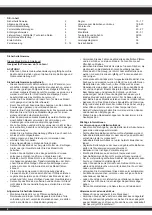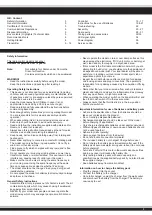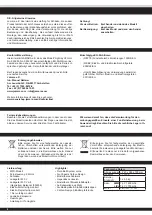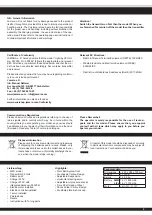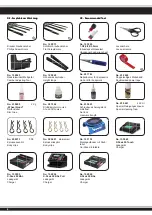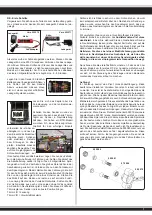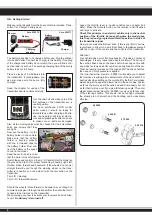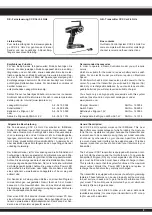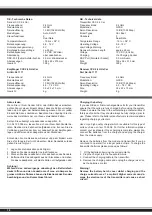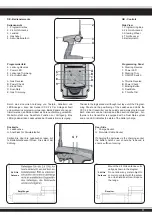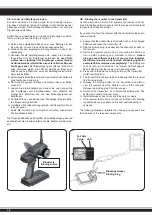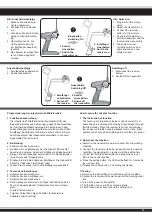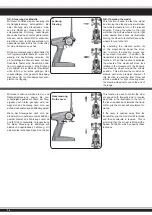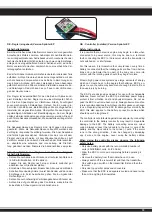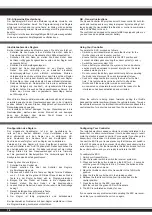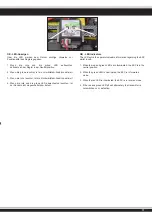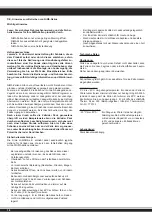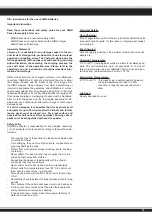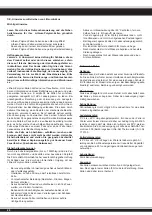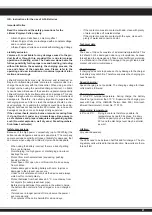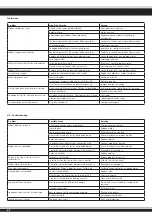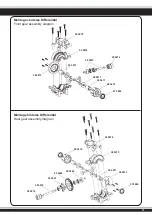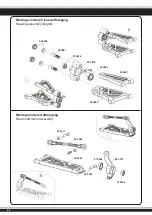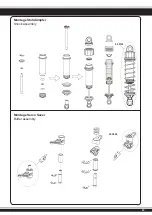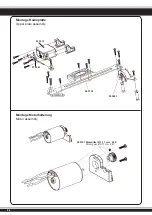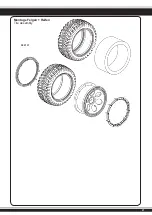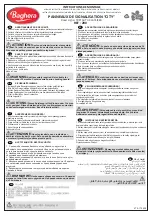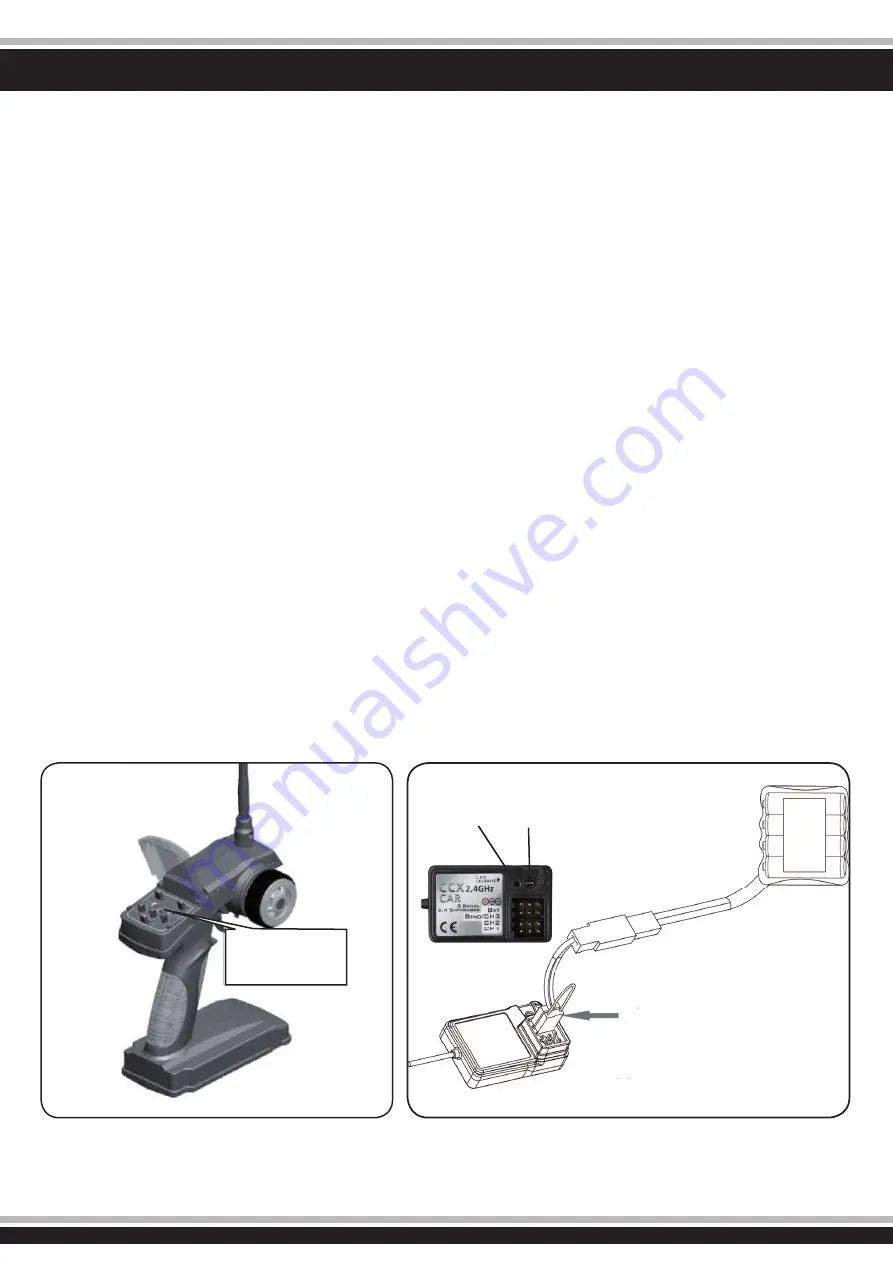
12
DE - Sender und Empfänger binden
Bei einer modernen 2,4 GHz Anlage ist es unbedingt notwen-
dig, dass der Sender und der Empfänger im Modell aneinander
gebunden werden. Der Empfänger akzeptiert dann nur noch die
Signale seines Senders.
Sollten Sie aus irgendwelchen Gründen die Bindung neu durch-
führen wollen, gehen Sie bitte wie folgt vor:
A. Setzen Sie aufgeladene Akkus oder neue Batterien in den
Sen-der ein. Lassen Sie den Sender ausgeschaltet.
B. Stecken Sie den beigefügten Bindungsstecker in den 3. Ka-
nalausgang.
C. Schalten Sie die Empfangsanlage ein, indem Sie den Emp-
fängerakku mit dem Empfänger verbinden.
Je nach Soft-
wareversion signalisiert Ihr Empfänger unterschiedlich
den Bindemodus (statt blinken leuchtet z.B. die LED oder
bleibt ganz aus).
Der Bindevorgang als solches ist aber bei
allen Versionen gleich. Die LED am Empfänger fängt an zu
blinken und zeigt damit an, dass der Empfänger sich im Bin-
demodus befi ndet.
D. Halten Sie die Bindetaste am Sender gedrückt und schalten Sie
gleichzeitig den Sender ein.
E. Der Sender beginnt zu blinken und zeigt an das er im Binde-
modus ist.
F. Lassen Sie die Bindetaste am Sender los und trennen Sie
den Empfänger vom Empfängerakku, bzw. schalten den
Regler aus. Entfernen Sie nun den Bindungsstecker am
Empfänger.
G. Schalten Sie nun den Sender aus. Die Anlage ist beim nächs-
ten Einschalten gebunden..
H. Installieren Sie alles ordnungsgemäß und überprüfen Sie al-
les sehr genau
I. Sollte die Funktion nicht erfolgreich verlaufen, wiederholen
Sie die Bindeprozedur.
Die folgende Abbildung stellt grafi sch den Bindevorgang dar und
kennzeichnet die einzelnen Elemente die bedient werden müs-
sen
GB - Binding the receiber to the transmitter
As with all modern 2.4GHz R/C systems the receiver must be
bound to the transmitter to ensure that the receiver will only react
to signals from that transmitter.
If you wish to re-bind the receiver with the transmitter please pro-
ceed as follows:
A. Ensure that the transmitter is fi tted with fresh or fully charged
batteries and leave the transmitter off.
B. Plug the binding plug (included) into the channel 3 socket on
the receiver.
C. Switch the receiver system on by connecting the battery or
turn in a BEC operating on a controller to control.
Depen-
ding on your software version of your receiver indicates
the different binding mode (instead of fl ashing lights for
example LED or remains out completely).
The binding pro-
cess as such is in all versions. The receiver LED will begin to
fl ash indicating that the receiver is in bonding mode.
D. Press and hold down the binding button on the transmitter
whilst switching it on.
E. The transmitter will begin to fl ash indicating that the receiver
is in bonding mode.
F. Release the binding button on the transmitter and discon-
nect the receiver from the battery or turn off the controller.
Release the binding plug from the receiver.
G. Switch of the transmitter. and remove the binding wire. The
system be bound at the next start ..
H. Install all properly and check anything very precisely.
I. If the receiver fails to bond or does not function after bonding
repeat the above procedure until a successful bonding is
achieved.
The following diagrams illustrate the bonding process and show
the locations of the relevant components.
Bindungsstecker
Binding Plug
Fail Safe
Setup LED
Bindetaste
Binding button


